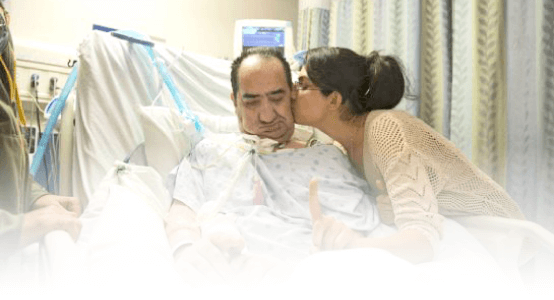What is an Under Water Seal Drain & Chest Tube ?
An Under Water Seal and chest tube (chest drain, thoracic catheter, tube thoracostomy, or intercostal drain) is a long, hollow, flexible plastic tube that is inserted through the chest wall between the ribs and into the pleural space or mediastinum. It is used to remove air (pneumothorax) or fluid (Pleural Effusion, blood, chyle), or pus (empyema) from the intrathoracic space. It is also known as a Bülau drain or an intercostal catheter.
An underwater seal drain (UWSD)or a chest drainage canister device is typically used to collect chest drainage (air, blood, effusions). Most commonly, drainage canisters use three chambers which are based on the three-bottle system. The first chamber allows fluid that is drained from the chest to be collected. The second chamber functions as a “water seal”, which acts as a one way valve allowing gas to escape, but not reenter the chest. Air bubbling through the water seal chamber is usual when the Patient coughs or exhales but may indicate, if continual, a pleural or system leak that should be evaluated critically. It can also indicate a leak of air from the lung. The third chamber is the suction control chamber. The height of the water in this chamber regulates the negative pressure applied to the system. A gentle bubbling through the water column minimizes evaporation of the fluid and indicates that the suction is being regulated to the height of the water column. Newer drainage canisters eliminate the water seal using a mechanical check-valve, and some also use a mechanical regulator to regulate the suction pressure. Systems which employ both these are dubbed “dry” systems, whereas systems that retain the water seal but use a mechanical regulator are called “wet-dry” systems. Systems which use a water seal and water column regulator are called “wet” system.

What is it used for?
The pleural space or pleural cavity is the space between the two pleura(visceral and parietal). The pleura is a serous membrane which folds back onto itself to form a two-layered membrane structure. The thin space between the two pleural layers is known as the pleural cavity and normally contains a small amount of pleural fluid, which allows the pleurae to slide effortlessly against each other during ventilation. The two layers are held together by a small negative pressure or vacuum, despite there being no anatomical connection between the two of them. This keeps the lungs inflated.
The reason for air or fluid accumulation in the pleural space may occur under a number of circumstances, however the most common ones are
- Pneumothorax, which is the accumulation of air or gas in the pleural space
- Pleural Effusion, which is the accumulation of fluid in the pleural space
- Chylothorax, which is a collection of lymphatic fluid in the pleural space
- Empyema(Pus), which is an infection of the pleural space
- Hemothorax, which is the accumulation of blood in the pleural space
- Hydrothorax, which is the accumulation of serous fluid in the pleural space
- Postoperative or after surgery, for example, thoracotomy, oesophagectomy, cardiac surgery(Coronary Artery Bypass Graft (CABG)
Whatever the reason for the insertion of a chest tube, the air or fluid may lead to an increased difficulty in breathing for your loved one. If both fluid and air need to be drained your loved one may require 2 chest tubes. If your loved one has just undergone a Lung Transplantation he or she may have 4 chest tubes.

How long will it be used for?
Chest drains normally remain in so long as the air or fluid remains in the pleural space. The patient will have regular chest x-rays to monitor the resolution of the problem.
Are there any complications?
Major insertion complications include hemorrhage(bleeding), infection, and re-expansion pulmonary edema(fluid in lungs). Injury to the liver, spleen or diaphragm is possible if the tube is placed below to the pleural cavity. Injuries to the thoracic aorta and heart can also occur.
Minor complications include a subcutaneous haematoma(bruising), anxiety, shortness of breath (dyspnea), and cough (after removing large volume of fluid). In most cases, the chest tube related pain goes away after the chest tube is removed, however, chronic pain related to chest tube induced scarring of the intercostal space is not uncommon.
Subcutaneous(below the skin) emphysema indicates back-pressure created by a clogged drain or insufficient negative pressure.
Chest tube clogging
The most frequent complication associated with chest tubes is chest tube clogging, which is commonly caused by thrombus formation inside the chest tube, and can cause major subsequent complications.In the setting of bleeding, chest tube clogging can cause pericardial tamponade(fluid accumulation below the heart), decreased cardiac output, and even death if not detected early. In the presence of air production, chest tube clogging can cause tension pneumothorax, and in the setting of infection, empyema. To reduce the potential for clogging, surgeons often employ larger diameter tubes, which can contribute significantly to chest tube related pain, though these too can clog. Chest tube clogging in channel style drains has also caused life-threatening complications when bleeding in the chest goes unrecognized because of an occluded drain.
Any questions?
Of course, if you have any questions or concerns, please discuss them with the ICU nurses and doctors.
All Intensive Care interventions and procedures carry a degree of potential risk even when performed by skilled and experienced staff. Please discuss these issues with the medical and nursing staff who are caring for your loved one.
The information contained on this page is general in nature and therefore cannot reflect individual Patient variation. It is meant as a back up to specific information which will be discussed with you by the Doctors and Nurses caring for your loved one. INTENSIVE CARE HOTLINE attests to the accuracy of the information contained here BUT takes no responsibility for how it may apply to an individual Patient. Please refer to the full disclaimer.
How can you get PEACE OF MIND, control, power and influence whilst your loved one is critically ill in Intensive Care?
You get to that all important feeling of PEACE OF MIND, CONTROL, POWER AND INFLUENCE when you download your FREE “INSTANT IMPACT” report NOW by entering your email below! In Your FREE “INSTANT IMPACT” report you’ll learn quickly how to get PEACE OF MIND, real power and real control and how you can influence decision making fast, whilst your loved one is critically ill in Intensive Care! Your FREE “INSTANT IMPACT” Report gives you in-depth insight that you must know whilst your loved one is critically ill or is even dying in Intensive Care! Sign up and download your FREE “INSTANT IMPACT” REPORT now by entering your email below!
In your FREE “INSTANT IMPACT” REPORT you’ll learn how to speak the “secret” Intensive Care language so that the doctors and the nurses know straight away that you are an insider and that you know and understand what’s really happening in Intensive Care!
In your FREE reports you’ll also discover
- How to ask the doctors and the nurses the right questions
- Discover the many competing interests in Intensive Care and how your critically ill loved one’s treatment may depend on those competing interests
- How to eliminate fear, frustration, stress, struggle and vulnerability even if your loved one is dying
- 5 “killer” tips& strategies helping you to get on the right path to PEACE OF MIND, control, power and influence in your situation
- You’ll get real world examples that you can easily adapt to your and your critically ill loved one’s situation
- How to stop being intimidated by the Intensive Care team and how you will be seen as equals
- You’ll get crucial ‘BEHIND THE SCENES’ insight so that you know and understand what is really happening in Intensive Care
- How you need to manage doctors and nurses in Intensive Care(it’s not what you think)
Make sure you also check out our “blog” section for tips& strategies and also check out our “your questions answered” section where we answer your questions or send me an email to [email protected] with your questions!
Sincerely, your Friend
Patrik Hutzel
Related Articles:
- How long can a breathing tube or an endotracheal tube can stay in?
- How long should a Patient be on a ventilator before having a Tracheostomy?


